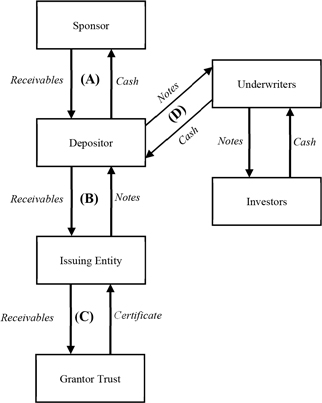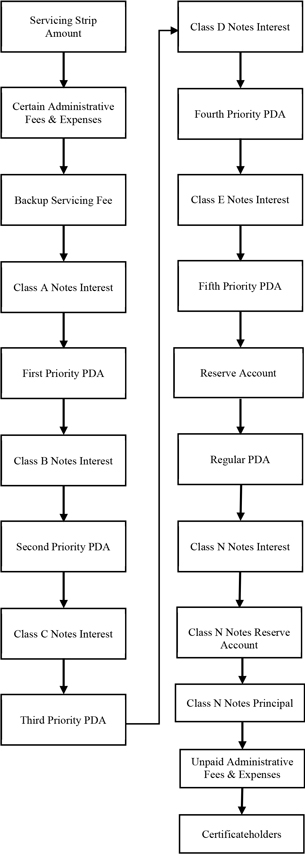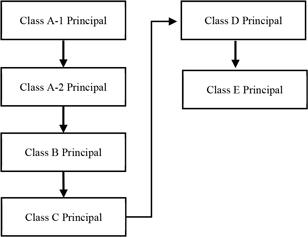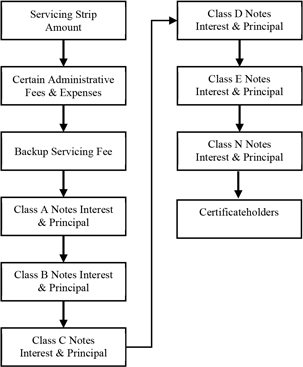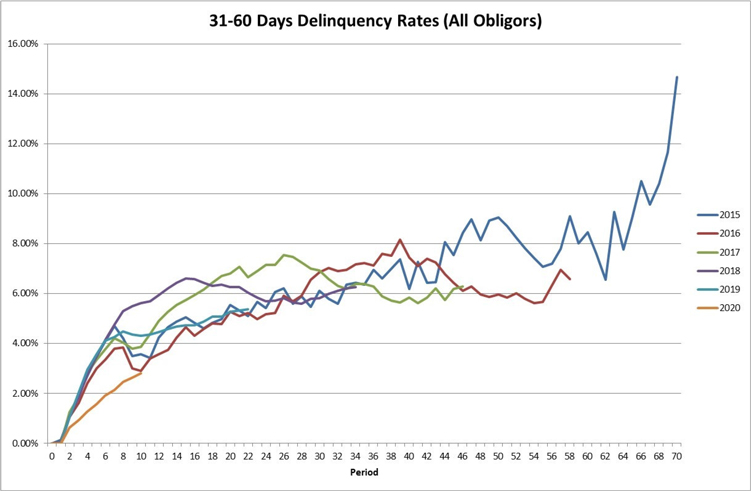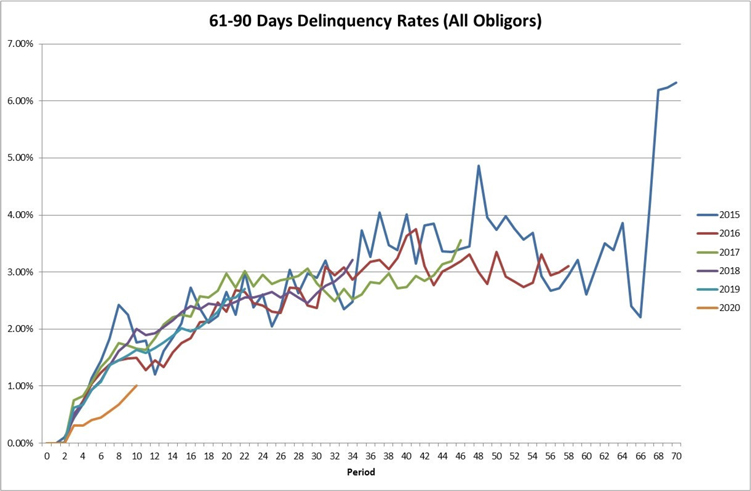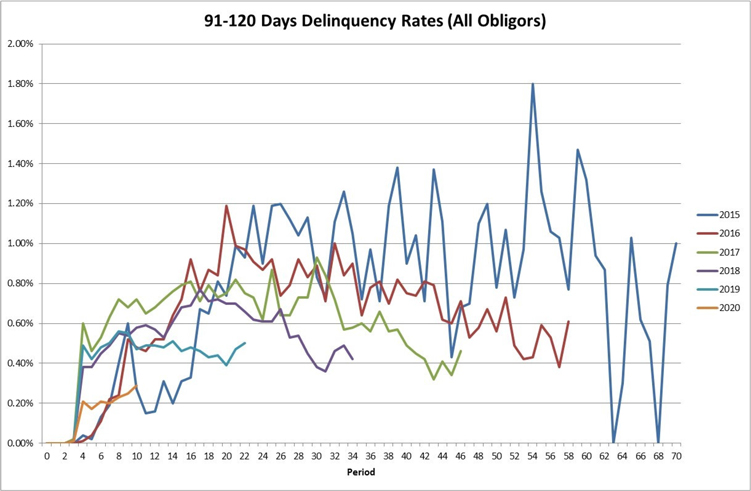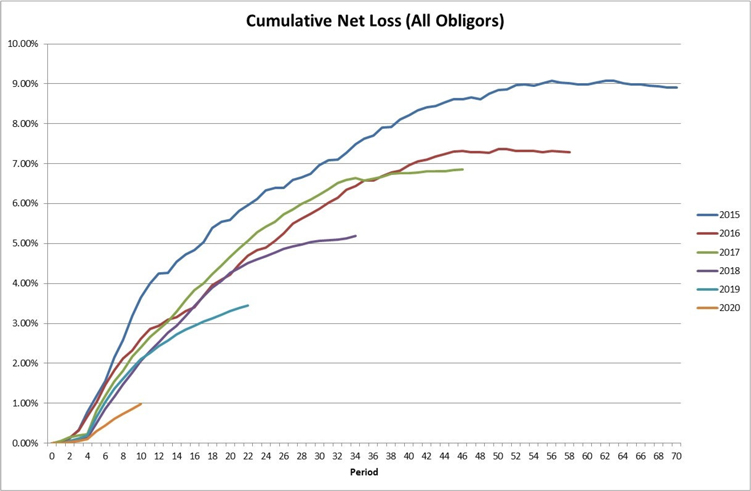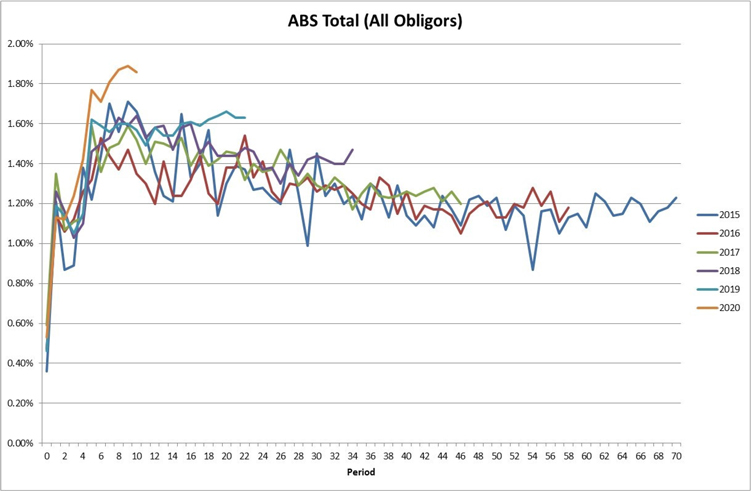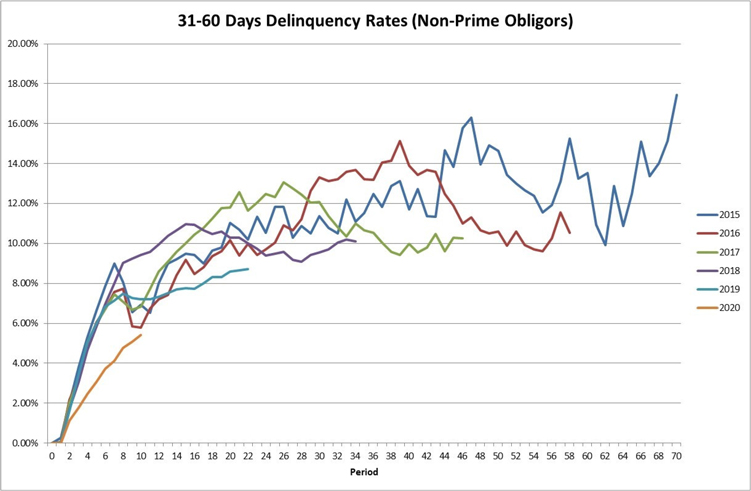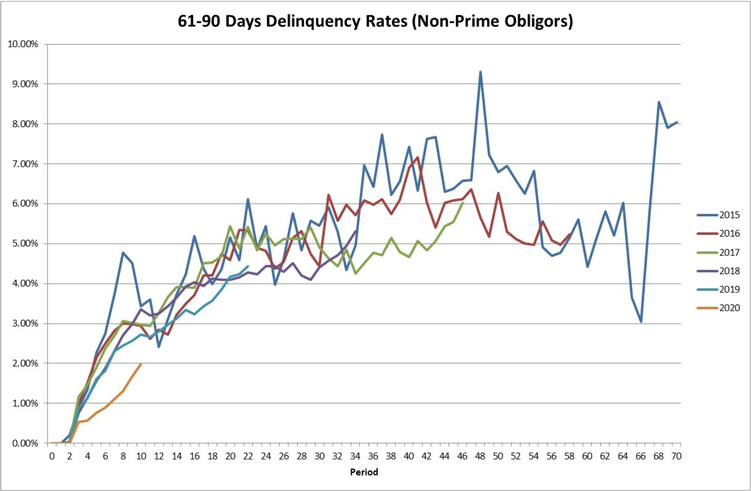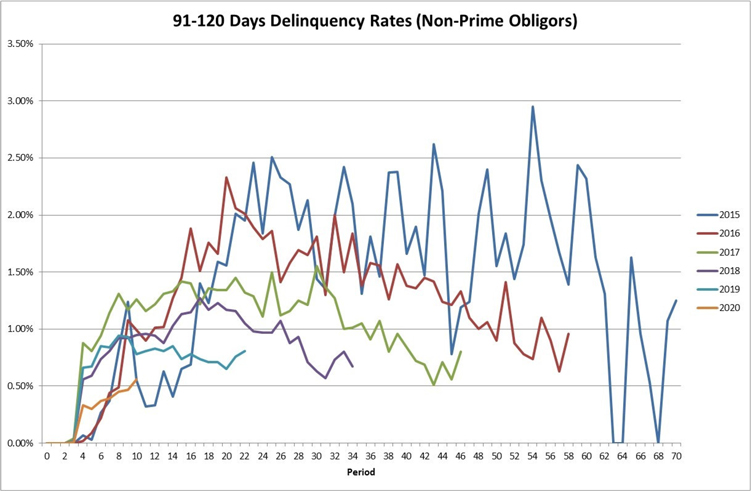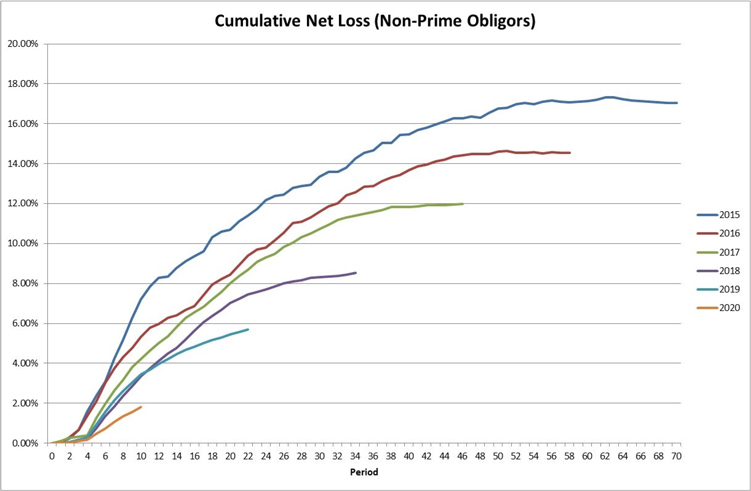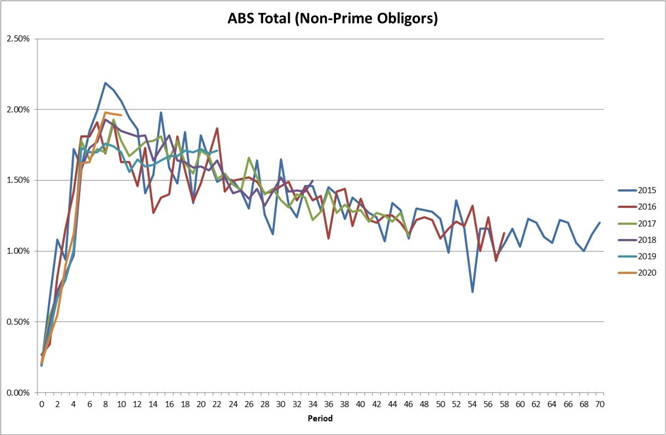“Collection Account” means the account designated as such, established and maintained pursuant to the Indenture.
“Collection Period” means with respect to a Distribution Date, the calendar month preceding the month in which such Distribution Date occurs; provided, however, that with respect to the first Distribution Date, the Collection Period will be the period from and including the Cutoff Date to the end of the calendar month preceding such Distribution Date.
“Collections” means all cash collections and other cash proceeds of the Receivables and Collateral, including all payments of principal, Interest Collections, Supplemental Servicing Fees, Liquidation Proceeds, any amounts received in connection with any repurchase of any Receivable by Carvana under the Receivables Purchase Agreement, the Depositor under the Receivables Transfer Agreement and the Issuing Entity under the Receivables Contribution Agreement, and any amounts received in connection with any indemnity payments from the Servicer with respect to actual breaches of certain covenants in the Servicing Agreement and any funds received by the Issuing Entity, the Depositor or the Servicer from the Receivables and Collateral received during any Collection Period.
“Default” means any occurrence that is, or with notice or the lapse of time or both would become, an Event of Default.
“Designated Accounts” means the Collection Account, the Note Distribution Account, the Reserve Account and the Class N Reserve Account, collectively.
“Dodd-Frank Act” means the Dodd-Frank Wall Street Reform and Consumer Protection Act of 2010, as amended.
“Exchange Act” means the Securities Exchange Act of 1934, as amended.
“FATCA” means Sections 1471 through 1474 of the Code (or any amended or successor version thereof) and any current or future regulations or official interpretations thereof.
“FDIC” means the Federal Deposit Insurance Corporation.
“Fifth Priority Principal Distributable Amount” or “Fifth Priority PDA” means, with respect to any Distribution Date, an amount, not less than zero, equal to the difference between (i) the excess, if any, of (a) the aggregate outstanding principal amount of the Class A Notes, the Class B Notes, the Class C Notes, the Class D Notes and the Class E Notes as of, for the first Distribution Date, the Closing Date, and for subsequent Distribution Dates, the preceding Distribution Date (after giving effect to any principal payments made on the Notes on such preceding Distribution Date) over (b) the Pool Balance as of the close of business on the last day of the related Collection Period, and (ii) the sum of (a) the First Priority Principal Distributable Amount, if any, with respect to such Distribution Date, (b) the Second Priority Principal Distributable Amount, if any, with respect to such Distribution Date, (c) the Third Priority Principal Distributable Amount, if any, with respect to such Distribution Date and (d) the Fourth Priority Principal Distributable Amount, if any, with respect to such Distribution Date; provided, however, that the Fifth Priority Principal Distributable Amount for each Distribution Date on and after the Final Scheduled Distribution Date for the Class E Notes will equal the greater of (i) the amount otherwise calculated pursuant to this definition and (ii) the outstanding principal amount of the Class E Notes as of the day preceding such Distribution Date.
“Final Scheduled Distribution Date” means for the final scheduled Distribution Dates set forth in “Prospectus Summary—The Offered Notes.”
“Financial Printer” means such financial printer as may be retained from time to time by the Administrator (on behalf of the Issuing Entity) in its sole discretion.
“First Priority Principal Distributable Amount” or “First Priority PDA” means, with respect to any Distribution Date, an amount equal to the excess, if any, of (i) the aggregate outstanding principal amount of the Class A Notes as of, for the first Distribution Date, the Closing Date, and for subsequent Distribution Dates, the preceding Distribution Date (after giving effect to any principal payments made on the Class A Notes on such preceding Distribution Date) over (ii) the Pool Balance as of the close of business on the last day of the related Collection Period; provided, however, that the First Priority Principal Distributable Amount for each Distribution Date on and after the Final Scheduled Distribution Date for the Class A Notes will equal the greater of (i) the amount otherwise calculated pursuant to this definition and (ii) the outstanding principal amount of the Class A Notes as of the day preceding such Distribution Date.
“Fourth Priority Principal Distributable Amount” or “Fourth Priority PDA” means, with respect to any Distribution Date, an amount, not less than zero, equal to the difference between (i) the excess, if any, of (a) the aggregate outstanding principal amount of the Class A Notes, the Class B Notes, the Class C Notes and the Class D Notes as of, for the first Distribution Date, the Closing Date, and for subsequent Distribution Dates, the preceding Distribution Date (after giving effect to any principal payments made on the Notes on such preceding Distribution Date) over (b) the Pool Balance as of the close of business on the last day of the related Collection Period, and (ii) the sum of (a) the First Priority Principal Distributable Amount, if any, with respect to such Distribution Date, (b) the Second Priority Principal Distributable Amount, if any, with respect to such Distribution Date, and (c) the Third Priority Principal Distributable Amount, if any, with respect to such Distribution Date; provided, however, that the Fourth Priority Principal Distributable Amount for each Distribution Date on and after the Final Scheduled Distribution Date for the Class D Notes will equal the greater of (i) the amount otherwise calculated pursuant to this definition and (ii) the outstanding principal amount of the Class D Notes as of the day preceding such Distribution Date.
116

